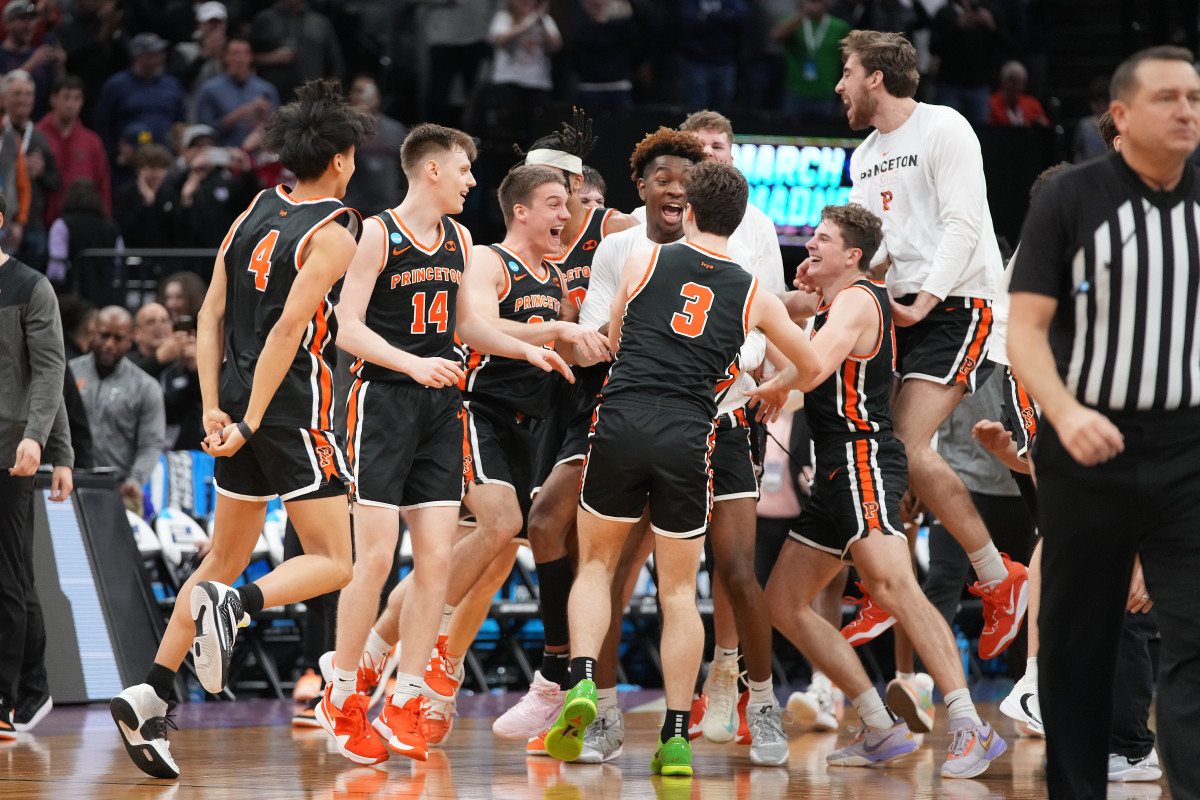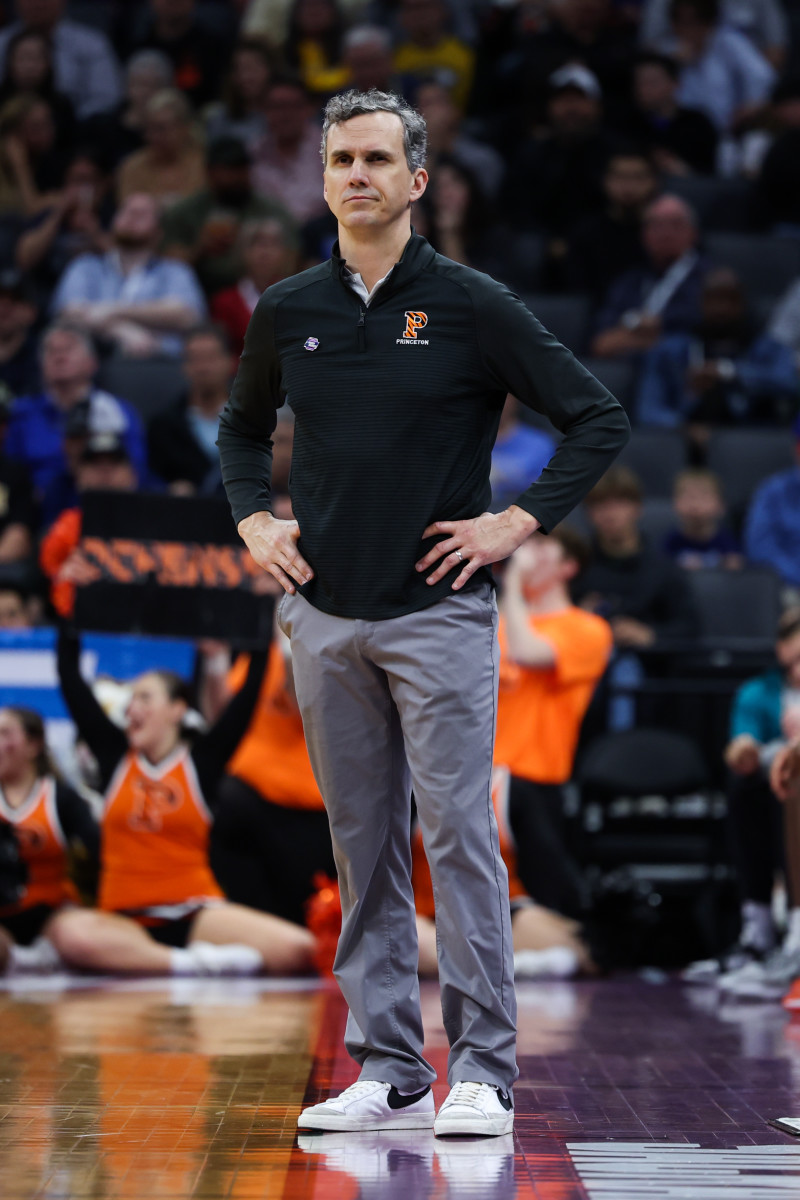Princeton’s Sweet 16 Appearance Is Your Atypical Cinderella Run

The Princeton Tigers are built all wrong to be here in this NCAA tournament Sweet 16.
Transfers? None. The portal tends to only flow one direction in the Ivy League: out. At Princeton, several of the players wouldn’t even leave when the Ivy League shut down its athletics for the 2020–’21 season due to the COVID-19 shutdown. While other leagues were straining to play through the pandemic, the eight Ivy institutions quickly announced they were putting sports on hold for an entire year.
Name, image and likeness opportunities? They do exist in a partnership with Opendorse, an NIL clearinghouse of sorts. (Offers for a video greeting from guard Ryan Langborg start at $51, if you’re interested.) But this isn’t exactly Oscar Tshiebwe raking in millions at Kentucky. Ivy League players don’t even get athletic scholarships, much less booster-funded Porsches.
Players utilizing the opportunity for a fifth (or sixth) year due to the pandemic? No such animal at Princeton. There is no graduate eligibility in the Ivy League. In an era of 24-year-old college basketball players, you don’t see any with the Tigers.

If there is one place where basketball programs should have been broken by the pandemic and not yet rebuilt, the Ivy League is it. And yet No. 15 seed Princeton is here, going from shut down to shocking the world in two seasons. The Tigers are in the second weekend of the Big Dance after upsetting Arizona and Missouri, the first Ivy team to make it this far in 13 years, heading into a Sweet 16 battle Friday against Creighton.
Watch March Madness games live with fuboTV. Start your free trial today!
“This is such a pleasure to be here,” Princeton coach Mitch Henderson says.
Henderson is the connective thread to program patriarch Pete Carril, having played for him in the 1990s and being a member of the Tigers team that famously shocked reigning national champion UCLA in the first round of the 1996 tourney. As an alum and coach since 2011, he is as authentically Princeton as a backdoor bounce pass.
“This is a wonderful place to be head coach,” Henderson says. “I pinch myself every day. The opportunity to be representing Princeton, I always felt like the luckiest guy in the world that got admitted.”
Given that background, Henderson can explain the interlocking nature of elite academics (Princeton is the No. 1 school in the U.S. News & World Report national university rankings) and semi-elite athletics. The school has about 5,300 undergrads, and nearly 20 percent of them are athletes. Those athletes are expected to keep up with the best and brightest in the classroom. For a change, the basketball players have been the recent celebrities on a campus that more often celebrates prominent professors and other noted intellectuals. Seeing members of the academic community at the team’s sendoff to Louisville was a welcome role change.
Henderson encouraged reporters to ask his seniors about their theses, a major project that is due this spring. “They’re doing some really cool things,” he says.
Indeed, the academic tracks for the Tigers probably don’t bear much resemblance to those of the other Sweet 16 teams. Among the theses:
Langborg, an Economics major, is writing about the effect of traveling over multiple time zones on NBA winning percentage and how Las Vegas money lines factor in that travel. Star forward Tosan Evbuomwan, also an Econ major, is working on how diversity in executive management for NBA franchises affects team performance. Sociology major Keeshawn Kellman is doing a thesis on how professional sports performance during a season can affect social behaviors in a community, such as crime rates and voter turnout.
Athletic themes, but not exactly phys-ed classes. Fortunately for the Econ majors, they got an extension on thesis deadlines that were set for mid-April. An Econ professor is on this trip with the team, which will help in keeping them on top of academic pursuits.
But after the desolation of a COVID year with no games and months spent off-campus, a little extra multitasking is not a major price to pay. That was a tough time, starting in the summer of 2020. Watching the rest of the country play basketball was brutal.

“My guys had to decide whether or not to stay in school, because you had to drop out,” Henderson says. “Everybody stayed in school, including the current seniors. … Zoom meetings for a basketball team is just what you think it is. It’s terrible. We’d have lunch Zooms, break it up into small groups. We tried everything we could.
“This is what I would say: I think we’re here because of it. You grow up. COVID has affected everybody in its own way, but for student-athletes, there’s a maturity that developed. Maybe we lost some fear or failure, perhaps, of what might happen. … I don’t think we’ll know until years from now how much we’ll point to COVID and say that’s what this run was about.”
In February 2021, Princeton at least re-opened its campus. Some classes were in person but many were via Zoom. Teams could practice, but they had to wear masks.
“I think in the long run it ended up helping us out,” guard Matt Allocco says. “It was unfortunate we couldn’t play. That was obviously the biggest thing that we missed. … We were online for school a couple hours a day, and then we would get together and practice.
At the time, you’re thinking this isn’t the best situation, but I think in the long run it helped us out just building that chemistry and competitive spirit together.”
In a college basketball era built on transience, Princeton is the outlier.
